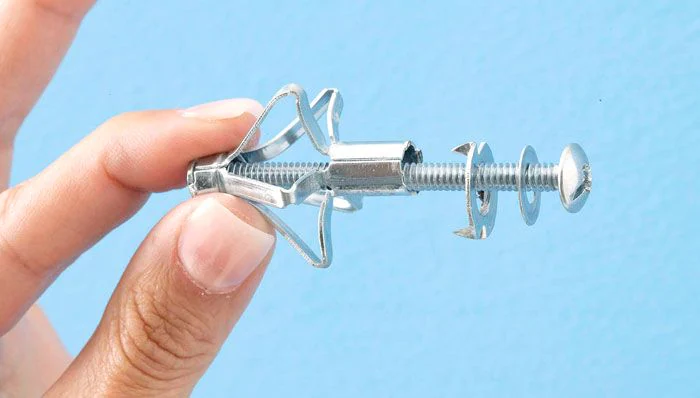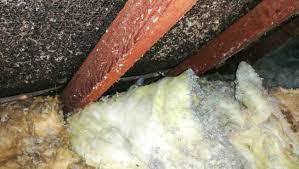When was asbestos banned in Australia?
What is asbestos?
Asbestos are naturally occurring fibrous silicate minerals found in rock formations and were used to be mined in great quantities in our country. Australia has an extensive history of asbestos use. We had the highest per capita rate of asbestos in the world from the 1950s to the 1970s.
If your home was built or renovated before 1990, it is entirely possible that asbestos containing materials could be found. Before the increased awareness of the detrimental effects of asbestos exposure, the material was widely used as a building material before its ban. It was once seen as the miracle construction material as its unique chemical and physical properties can protect against fire, corrosion, cold, acids, electricity, noise, vibration, salt water, frost, dust, vermin, and more. Aside from that, it was also cheap and widely available – who doesn’t want that?
Types of asbestos
- Friable
Since the late 1800’s, friable asbestos has been commonly used in commercial and industrial settings for fireproofing, soundproofing, and insulation. It may also be found in houses built before 1990.
Friable asbestos can be very brittle and crumble with light pressure as it contains loosely bound fibres. This makes it more hazardous than non-friable asbestos as the fibres are more easily released into the air and stay for longer periods of time. Also, since the fibres are not visible to the naked eye, they are easily carried by the wind over large distances which can potentially affect multiple people.
- Non-friable
Non-friable asbestos products are generally safe compared to friable ones as it is a mixture of a bonding compound (such as cement) with a small amount of asbestos making the fibres tightly bound and not easily released into the air. These products may be more solid and are considered low risk but may become friable once damaged or badly weathered.
History
By the mid-1970s there were increasing restrictions on asbestos usage in the USA and western Europe, and a growing number of legal actions against the big asbestos companies. This resulted in the decline of the international asbestos industry in the developed world and a major restructuring of the world asbestos industry.
Canadian chrysotile miners were determined to resist the trend but total fibre output fell steeply from 1980 as world demand shrank. Markets also changed, with Asian countries replacing the USA as Canada’s major customers. The provincial government of Quebec established the National Asbestos Corporation of Quebec, making the government itself an asbestos producer. It formed a powerful lobby with the Canadian federal government to ensure the industry’s survival on the international market.
In the 1990s Russia became a major exporter of chrysotile. In a continually declining market Russia discounted prices to increase its market share. Demand for the amphibole asbestos minerals, amosite and crocidolite, fell away most sharply and almost all mining ceased in the 1990s. In the developed world the trend away from asbestos to other fibres for asbestos-cement products continued.
Restrictions on the importation of asbestos fibre and on asbestos usages tightened. Japan, the world’s largest consumer of asbestos fibre after Russia in the 1990s, halved its consumption and banned most usages in 2003. Other countries in Asia such as Singapore, South Korea and Taiwan have also cut consumption. The European Union placed a total ban on all asbestos fibre and asbestos products in 2005. South Africa has also banned asbestos.
The continuation of the international asbestos industry into the twenty-first century
At the beginning of the new century Russia and Kazakhstan, China, Canada, Brazil and Zimbabwe were the major producers of asbestos fibre. All except Canada remain heavy consumers of asbestos products as well. World asbestos consumption is concentrated in Russia and some Asian countries, notably China, India and Thailand, where usage has risen sharply in the first decade of the twenty-first century. China and Russia have become the world’s largest consumers.
Why is asbestos dangerous?
Asbestos becomes a potential risk to health if fibres are suspended in air and breathed into the lungs. Breathing asbestos fibres into the lungs can cause a range of diseases, including mesothelioma, lung cancer and asbestosis.
 When did we start to learn the dangers of asbestos?
When did we start to learn the dangers of asbestos?
History shows that the dangers of asbestos fibres were discovered as early as the late 1800s/early 1900’s in Britain. In 1906, the British Royal Commission confirmed the first cases of asbestos deaths in factories, and recommended better ventilation and other safety measures.
Australia soon followed suit, introducing similar ventilation laws in 1911. However it was not until 1935 that reports began emerging of respiratory issues facing workers in the James Hardie factory in Perth, and a link between lung disease and asbestos dust was considered.
Australia’s major asbestos mine in Wittenoom, Western Australia began operation in 1940, and four years later, warnings over dust levels began to arise. Unfortunately for workers, no real action was taken, and during the period of 1961-1965 there were more than 100 cases of lung disease recorded from workers at this mine. This number increased steadily and records show that by 1975 Wittenoom mine had recorded 27 deaths.
Still asbestos continued to be mined and used across the country. By 1985, the number of deaths of asbestos mine workers was into the many hundreds, and it was in this year the first successful common law claim for compensation as a result of asbestos-related disease occurred in Victoria. Asbestos use was on the way out.
As Australians became more aware, the removal process began in earnest. Homes were knocked down, major renovations took place, and public buildings were rebuilt without any asbestos products.
While the use of asbestos gradually diminished, the Australia-wide ban on the manufacture and use of all types of asbestos and asbestos-containing materials took effect on 31 December 2003.
Asbestos in Australia today
Today, asbestos has been replaced with Fibre Cement; a material with almost indistinguishable properties, but without the hazardous fibres. But how can you differentiate between asbestos and fibre cement easily as a non-professional? Asbestos will usually have a distinct pattern on it which looks similar to the dimples on a golf ball. Fibre concrete also has a texture on it, however it is far less grooved. There is often a noticeable difference in colour but this is simply due to age.
Properties wise, Asbestos and Fibre Cement are almost identical. They are both insoluble in water, resistant to fire, and thermally stable meaning acts like insulation. This therefore makes fibre cement an excellent and safe substitute for asbestos products.
Reference-
Thank you for reading this information about asbestos, we have written an article on the best 30 “Asbestos Removal Melbourne” Companies. Please take a read.
https://www.asbestossafety.gov.au/







